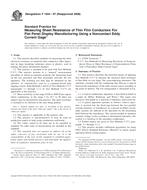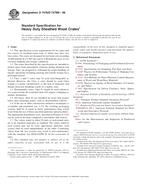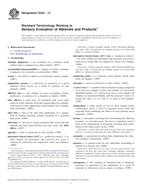1.1 This practice covers a procedure for measuring the ultrasonic velocities in the outer wall of polyethylene storage tanks. An angle beam lateral longitudinal (LCR) wave is excited with wedges along a circumferential chord of the tank wall. A digital ultrasonic flaw detector is used with sending-receiving search units in through transmission mode. The observed velocity is temperature corrected and compared to the expected velocity for a new, unexposed sample of material which is the same as the material being evaluated. The difference between the observed and temperature corrected velocities determines the degree of UV exposure of the tank.
1.2 The practice is intended for application to the outer surfaces of the wall of polyethylene tanks. Degradation typically occurs in an outer layer approximately 3.2-mm [0.125-in.] thick. Since the technique does not interrogate the inside wall of the tank, wall thickness is not a consideration other than to be aware of possible guided (Lamb) wave effects or reflections off of the inner tank wall. No special surface preparation is necessary beyond wiping the area with a clean rag. Inside wall properties are not important since the longitudinal wave does not strike this surface. The excitation of Lamb waves must be avoided by choosing an excitation frequency such that the ratio of wavelength to wall thickness is one fifth or less.
1.3 UV degradation on the outer surface causes a stiffening of the material and an increase in Young’s modulus and the longitudinal wave velocity.
Product Details
- Published:
- 02/15/2006
- Number of Pages:
- 7
- File Size:
- 1 file , 300 KB


